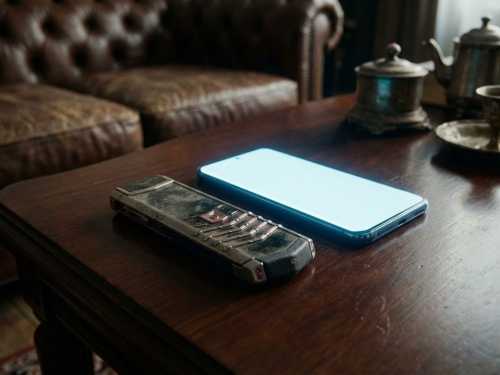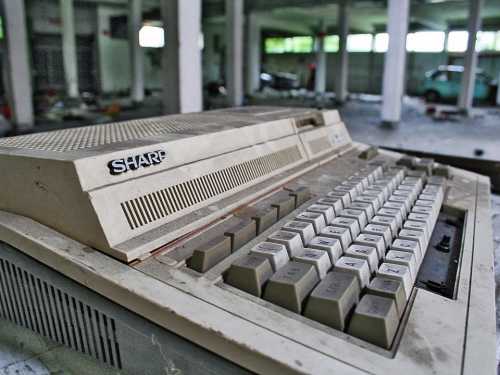
The end of the 90s, the world of mobile phones is a realm of practicality and plastic. Nokia, Siemens, Motorola compete to make the device smaller, with a better battery and a louder ring. These were reliable “workhorses” that became obsolete scrap in a year or two. And now, in the very heart of this world, in the bowels of the Finnish giant Nokia, an absolutely crazy idea is born. What if a phone could not be just a gadget, but a work of art? What if it did not age, but, like a Swiss watch or a luxury car, only became more valuable over time?
Thus began the story of Vertu in 1998, a brand that would forever become synonymous with incredible, almost absurd luxury in the world of technology.
Philosophy and the birth of a legend
The ideologist of this rebellion against “disposable” electronics was Nokia's chief designer Frank Nuovo. He dreamed of creating something that could be passed down as a legacy. The name itself, Vertu, came from the Latin Virtus (“valiance”, “virtue”), and in European languages was associated with a love of art and exceptional things. It was not just marketing – it was a philosophy.
To realize this dream, a special manufactory was built in the UK, not far from the center of the British aerospace and automotive industries. It was not like an ordinary factory. Rather, it was a jewelry workshop, where craftsmen who previously assembled watches or created jewelry worked in white gloves. Each Vertu phone was assembled by hand from start to finish by one person, who at the end put his personal signature-engraving under the battery cover.
The materials were appropriate: titanium, polished steel, yellow and rose gold cases. The screen, instead of the usual plastic, was protected by a huge, solid sapphire crystal that could only be scratched by a diamond. The finish was only the best calfskin or alligator leather.
The Vertu ringtones were no ordinary “pinch”. The main melody, Sandpiper, was written by Oscar-winning composer Dario Marianelli, and the background compositions were recorded in collaboration with the band Zero 7 and the London Symphony Orchestra. The phone didn't just ring – it played.
Each titanium key was fitted with tiny ruby bearings. This was not done for beauty (no one saw them), but to create a unique, springy and noble “click”. This sound and tactile sensation were not to change over the years, unlike the loose plastic buttons of competitors.
The rise and golden age
On January 21, 2002, the first-born, Vertu Signature, was presented at the Paris Museum of Modern Art. Platinum case, sapphire crystal, ruby bearings and a price tag of 24,000 euros. The world was shocked. But despite the insane cost, orders poured in. Vertu instantly became a status symbol.
But the main feature was not so much the handset itself, but the magic that accompanied it. On the side of the phone there was a special button – the key to the Vertu Concierge service. It was your personal assistant, available 24/7 anywhere in the world. In the era before smartphones, Booking and Uber, this was a real miracle. One call – and a living person on the other end of the wire could:
- Book a table at the last minute at a three-Michelin-starred restaurant.
- Get tickets to a closed fashion show in Paris or to the Champions League final.
- Arrange the delivery of a rare gift to the other side of the world.
It wasn't just a phone, it was a ticket to a closed club.
However, the first steps were not cloudless. If the case was strong as a tank, then the Symbian-based software sometimes crashed. And repairing a piece of jewelry turned out to be much more difficult than a regular “tube”. The company drew conclusions by implementing a brutal quality control system, where everything was checked – from the stability of the connection to the perfect shine of each screw.
The success of the first model launched a whole galaxy of legendary phones
2004: The Ascent, a “sporty” model, is released. Trimmed in leather and “liquid metal,” it cost “only” 4,500 euros and already had a color display.
2006: The Constellation line is born, inspired by 1950s aviation, with a ceramic keyboard and a high-quality TFT screen.
2009: The first Constellation Ayxta clamshell for travelers appears.
2010: The Constellation Quest is released, Vertu's first smartphone with a QWERTY keyboard, essentially a luxury version of the popular Nokia E72. It was priced at €21,500 for the gold version with black sapphire keys.
It was the pinnacle. Vertu was in the hands of stars, oligarchs and sheikhs. It was not just a phone.
The first cracks
And then came 2007, and Steve Jobs showed the world the iPhone. At first, Vertu didn't pay attention to it. So what is this iPhone of yours? A glass rectangle with no buttons that needs to be charged every day. Is that a luxury?
But it turned out that the rules of the game had changed forever. The iPhone proved that the new status symbol was not diamonds on the case, but functionality, an ecosystem of applications and a huge touchscreen. The world suddenly wanted not an “eternal artifact”, but a powerful tool in its pocket.
For Vertu, this was the beginning of the end. Their phones, running on the outdated Symbian system, looked like expensive dinosaurs. In 2012, Nokia, itself experiencing a crisis, sold its luxury brainchild to the Swedish fund EQT VI. The new owners tried to save the situation by switching the phones to Android. But it was too late.
Models like the Vertu Ti were met with ridicule rather than admiration. Experts found them to have outdated processors and low-resolution screens (800×480), which looked ridiculous compared to Samsung or Apple flagships.
A tragicomic situation arose: the owner of a Vertu paid $10,000 for a phone that worked slower than his driver's $700 device.
Final chord
Then the company changed hands. In 2015, it was bought by Chinese investors, and in 2017, it was resold to Turkish businessman Murat Hakan Uzan. He tried to create hype by putting up a limited edition Vertu Signature Cobra for sale for $360,000 (a snake design developed back in 2006 with jewelers Boucheron), but it looked like agony.
In the summer of 2017, the story ended. Vertu declared bankruptcy. The legendary factory in Hampshire was closed. Hundreds of unique craftsmen who assembled phones by hand were laid off. Unique equipment, machines, and even a museum collection of phones were sold at auction, like the remains of the sunken Titanic.
Life after death
Does this mean that Vertu no longer exists? Formally, no. But the “same” British Vertu, with its philosophy and handwork, died with the closure of the factory. The brand finally came under the control of Chinese owners.
Modern models like the Aster P or Metavertu are a different story. They are essentially Chinese smartphones (often from ZTE or Nubia) repackaged in expensive leather and titanium. They add buzzwords like “crypto wallet” and “NFT,” but there is no soul behind it.
The English engineering school, unique ideology and true exclusivity are a thing of the past, giving way to soulless marketing on the ruins of a great name. The history of Vertu has become an instructive parable that even the most expensive materials and the best service will not save from the inexorable march of progress.






